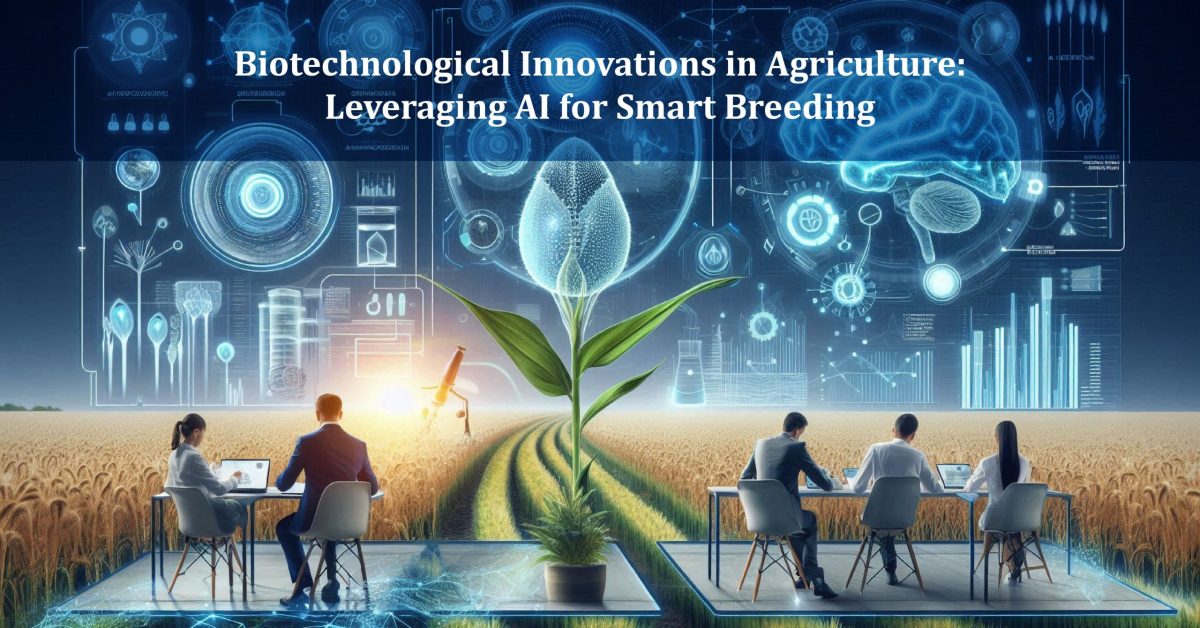Applications of AI in Smart Breeding
A common application of AI in smart breeding involves QTL mapping, which involves the relation of the genome to the genotypes of various qualities. Using AI techniques, one can screen very large databases to find the correlations between genes that control inherent characteristics such as drought or disease resistance. These markers can then be employed in such breeding programs to make sure that new crops develop to contain these preferred characteristics.
GWAS, which investigates pairs consisting of specific genetic variants and traits within a population, also involves the use of AI. This helps the researchers in genetic engineering to know which gene causes which trait and how this gene has to be tugged to ensure maximum yield from the crops. For example, by using AI, it is easy to determine which combinations of genes produce crops that can cope with extreme heat or those that need little water—a fine feature given the increasing effects of climate change.
Another important field where AI is on the rise is high-throughput phenotyping, which is characterized by the collection method of quantitative data on plant traits. AI analyzes the huge volume of phenotyping data and identifies the pattern by which the genetic makeup of a plant will affect its phenotype data. This makes the breeding decision much faster and more accurate, as compared to conventional plant breeding techniques, hence reducing the period needed to produce new crop varieties.
Climate-Resilient Crops: A Necessity in the Age of Climate Change
Global warming is among the biggest issues that agriculture has to deal with in the present day. Climate change is a Frankenstein that manifests in the form of high temperatures, irregular rainfalls, and pest invasions that undermine the world’s food security. To this effect, smart breeding, which employs the application of artificial intelligence to breed climate-resilient crops, is being adopted by researchers. These are crops that have been developed specifically to cope with the pressures that have been triggered by climatic changes in order to retain production of crops under all sorts of situations.
For instance, AI can assist in recognizing the genes of heat tolerance. According to the samples extracted from plants raised in varying temperature environments, AI determines which sets of genes enable plants to grow in the heat. In the same way, AI is used to create new crops that can grow in areas affected by dry weather, which is becoming rampant in different regions across the globe. By understanding how plants contain higher percentages of genes that enable them to conserve water, such crops can be developed, hence less pressure on limited water resources.
GWAS, which investigates pairs consisting of specific genetic variants and traits within a population, also involves the use of AI. This helps the researchers in genetic engineering to know which gene causes which trait and how this gene has to be tugged to ensure maximum yield from the crops. For example, by using AI, it is easy to determine which combinations of genes produce crops that can cope with extreme heat or those that need little water—a fine feature given the increasing effects of climate change.
The Role of Genomics and Big Data
Another important field where AI is on the rise is high-throughput phenotyping, which is characterized by the collection method of quantitative data on plant traits. AI analyzes the huge volume of phenotyping data and identifies the pattern by which the genetic makeup of a plant will affect its phenotype data. This makes the breeding decision much faster and more accurate, as compared to conventional plant breeding techniques, hence reducing the period needed to produce new crop varieties.
Global warming is among the biggest issues that agriculture has to deal with in the present day. Climate change is a Frankenstein that manifests in the form of high temperatures, irregular rainfalls, and pest invasions that undermine the world’s food security. To this effect, smart breeding, which employs the application of artificial intelligence to breed climate-resilient crops, is being adopted by researchers. These are crops that have been developed specifically to cope with the pressures that have been triggered by climatic changes in order to retain production of crops under all sorts of situations.
For instance, AI can assist in recognizing the genes of heat tolerance. According to the samples extracted from plants raised in varying temperature environments, AI determines which sets of genes enable plants to grow in the heat. In the same way, AI is used to create new crops that can grow in areas affected by dry weather, which is becoming rampant in different regions across the globe. By understanding how plants contain higher percentages of genes that enable them to conserve water, such crops can be developed, hence less pressure on limited water resources.
